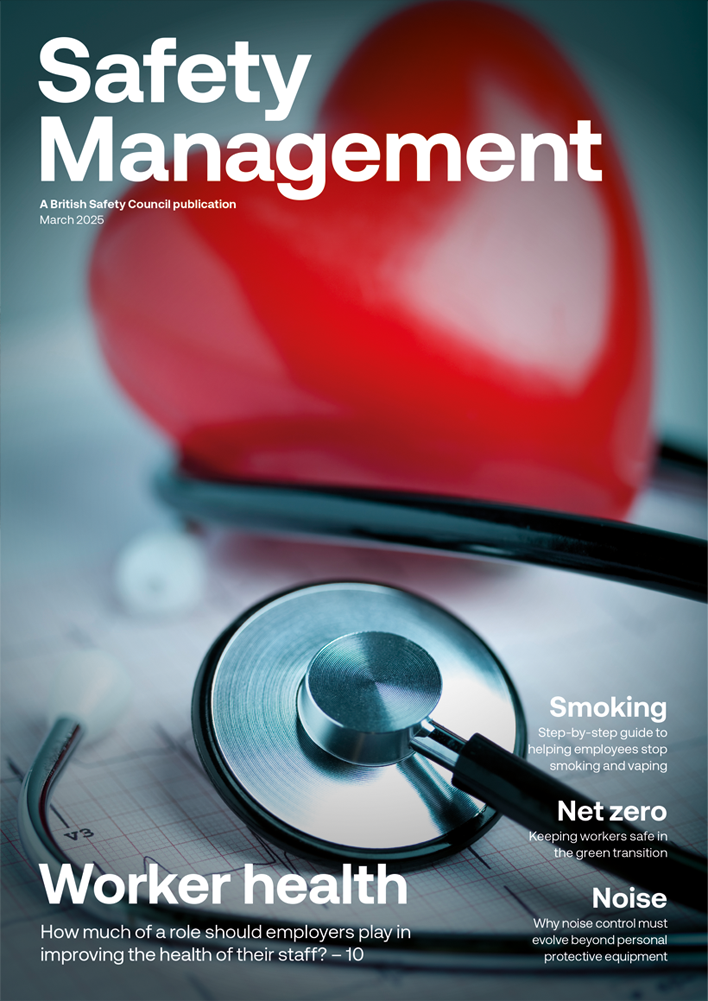Opinion
Workplace transport prosecutions and human factors – a common theme?
According to the latest Health and Safety Executive (HSE) statistics, of the 135 workers killed in work-related accidents in 2022/2023, 20 of the fatalities involved being struck by a moving vehicle, and this continues to be one of the three main causes of fatal injury to workers, with similar numbers of fatalities in previous years. It is hardly surprising that such incidents frequently result in a fatality but this raises the question: why do these types of incidents remain so commonplace?
Relevant HSE guidance, A guide to workplace transport safety (HSG136), underpinned by the requirements of the Workplace (Health, Safety and Welfare) Regulations 1992 and, in particular regulation 17, identifies the three main areas to focus on as part of the risk assessment process: safe site, safe vehicle and safe driver.
Perhaps understandably, the majority of the HSG136 document focuses on ways of ensuring a safe site. However, given that workplace transport encompasses “any vehicle or piece of mobile equipment used in any work setting”, the scale of the undertaking in seeking to ensure workplace transport safety on a large site – potentially covering a number of hectares with multiple different operators, users and visitors – is particularly challenging.

Matthew Sulley, senior associate, Pinsent Masons LLP
Lessons from transport prosecutions
The importance of ensuring the successful implementation, adherence to, and monitoring of controls flowing from a carefully considered risk assessment has been highlighted by a number of recent prosecutions for health and safety breaches in the area of workplace transport. These prosecutions underline the serious consequences of failing to properly manage workplace transport risks, but also afford an opportunity to reflect on the underlying issues behind some of these incidents, which may trigger a review of risk management policies and procedures among employers and dutyholders.
Earlier this year, Turners (Soham) Limited and The Haulage Group Ltd were fined £1.9 million and £300,000 respectively for breaches of sections 2 and 3 of the Health and Safety at Work Act 1974 (HSWA) following an incident where a depot manager was fatally injured after he was struck by a reversing HGV. The incident occurred at Turners’ Birmingham depot, which they reportedly leased as a tenant from The Haulage Group Ltd. The HSE investigation reportedly revealed that there was no suitable and sufficient risk assessment and no pedestrian walkways in place. In light of these issues, the case was resolved by way of guilty pleas from both defendants, perhaps unsurprisingly.
The aspect of this case that is of particular interest is the prosecution of the landlord, The Haulage Group Ltd, and this serves as a stark reminder that it is not only employers who are responsible for complying with the regulatory requirements relating to traffic routes and pedestrian segregation, but also those who exercise control over a workplace to the extent that it relates to matters that are within their control.
For example, it is easy to see how a landlord may retain control of aspects such as the painting of designated walkways and the installation of permanent signage under the terms of a tenancy agreement. This case highlights the critical importance of complete co-operation as well as clear and effective lines of communication between those who share responsibilities for the management of workplace transport risks and the implementation of effective controls.
Another workplace transport prosecution that hit the headlines of the health and safety press recently involved a visiting driver from Hungary who fell from a loading bay and suffered severe head injuries which proved fatal. The deceased was reportedly preparing the load for his HGV and in doing so had stood on a flatbed trailer adjacent to the loading bay. The flatbed trailer then moved away and the deceased fell 1.25 metres to the ground below.
The HSE investigation identified that while a workplace transport risk assessment had been carried out which identified the risk of a fall from height:
- The control measures had not been adhered to in practice
- There had been a lack of effective supervision to monitor workers’ compliance with the controls, and
- Insufficient consideration had been given to visiting drivers, particularly when English is not their first language.
In this case, Williams Haulage Limited, which owned and operated the site but was not the deceased’s employer, pleaded guilty to a breach of section 3 of the HSWA and received a £100,000 fine.
The tragic outcome of the above incident highlights the importance of ensuring that visiting workers to a site – including visiting drivers – are fully aware and informed of the applicable control measures in place to help avoid such incidents. Dutyholders who host visiting drivers need to give careful consideration to how best to communicate safety-critical information – such as safe pedestrian routes and safe operating procedures for parking and unloading – when those drivers are likely to be unfamiliar with the site.
These prosecutions bring into focus the need to ensure that human factors are fully integrated into the risk assessment process. This means that any potential failures by workers – which might lead to an accident, and the factors that could make those failures more or less likely to occur, referred to by HSE as ‘Performance Influencing Factors’ (PIFs) – are properly taken into account.
Human factors in transport-related accidents
Human factors formed part of Mr Justice Fraser’s considerations when sentencing Transport for London (TfL) and Tram Operations Ltd in relation to one of the most significant transport-related multiple fatality incidents of recent years – the Croydon tram crash in 2016.
Both organisations pleaded guilty to a breach of section 3 of the HSWA, and, in July this year, TfL was fined £10 million (the largest fine for a health and safety breach since the introduction of the definitive sentencing guideline for health and safety offences in February 2016), and Tram Operations Ltd received a £4 million fine. The culpability of both defendants was found to be high with a high likelihood of level A harm – namely where the seriousness of harm risked is death, physical or mental impairment resulting in lifelong dependency on third-party care for basic needs, or significantly reduced life expectancy. Mr Justice Fraser acknowledged there had been ‘human error’ on the part of the tram driver, Mr Dorris, who had been unanimously acquitted of a breach of section 7 of the HSWA.
However, he then went on to directly adopt salient aspects from HSE guidance on human factors (Reducing error and influencing behaviour), within his sentencing remarks, including the following passage: “Attributing incidents to ‘human error’ has often been seen as a sufficient explanation in itself and something which is beyond the control of managers. This view is no longer acceptable to society as a whole. Organisations must recognise that they need to consider human factors as a distinct element which must be recognised, assessed and managed effectively in order to control risks.”
Ultimately, the judge concluded that “…there were failures of control and multiple contributory elements that caused the disaster”.
There continues to be a similar number of fatal workplace transport incidents year-on-year and, as the cases considered here demonstrate, an element of human failure appears to play a part in a proportion of the incidents. This suggests that dutyholders should place a greater focus on PIFs when carrying out risk assessments, and when implementing (and subsequently monitoring) the effectiveness of control measures designed to manage and minimise the risk of these types of fatal incidents occurring. Successfully optimising those human factors that positively influence performance at a risk assessment and risk management level may also help organisations to develop and maintain a positive safety culture.
Matthew Sulley is a senior associate at Pinsent Masons LLP. Contact him at:
pinsentmasons.com
OPINION

Why electric cooking is the future we need
By Tushar Nair, Global Cooksafe Coalition on 01 April 2025
The way we cook is more than just a matter of taste and convenience – it’s a critical climate, health, safety, and economic issue. Despite the growing momentum toward building electrification, cooking remains one of the last strongholds of fossil fuel reliance in our homes and commercial kitchens.

Beyond compliance: why noise control must evolve beyond PPE
By Gill Cussons, Noise & Vibration Solutions on 13 March 2025
Engineering solutions for noise control on plant, machinery and tools are often straightforward, low-cost and bring financial savings themselves, so it’s time employers moved away from the default position of purchasing and issuing personal hearing protection to workers.

Navigating a changing world
By Mike Robinson FCA, British Safety Council on 03 March 2025
Human history has hung on a timeline of change and every generation has been asked to answer the same call, to adapt and evolve. From the printing press to the PC, change has continuously re-defined both the work we do and how we do it. Where the future differs from the past is the pace at which change will impact society.



